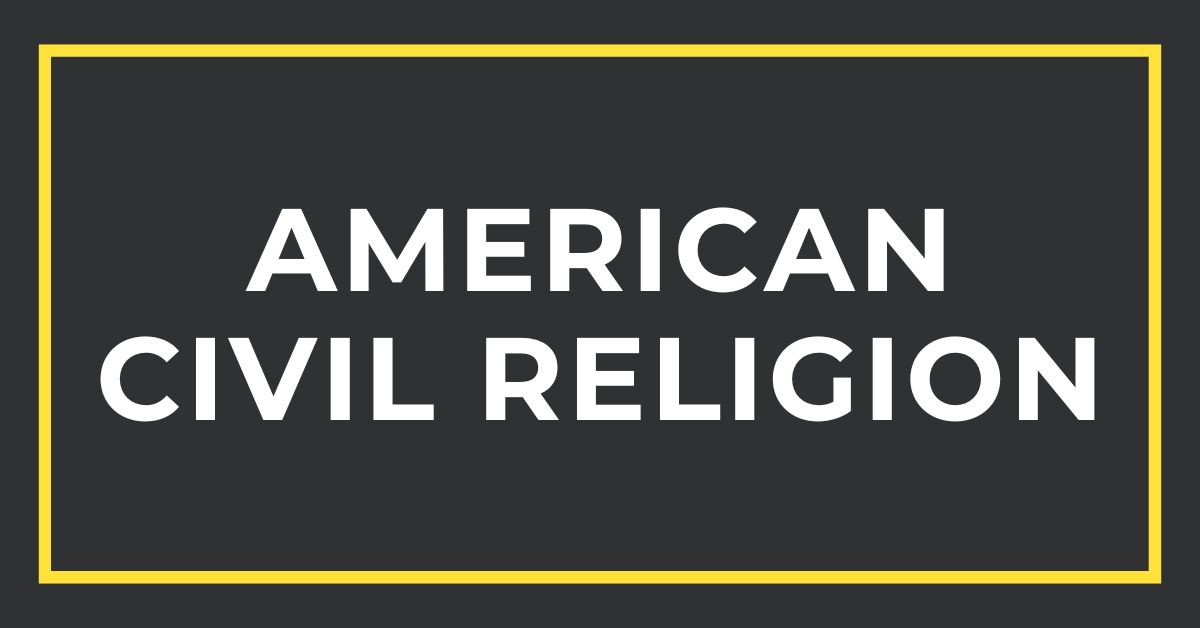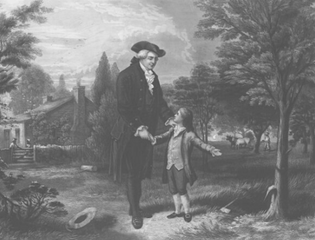American Civil Religion
Table of Contents

Dr. Robert Bellah on his book Religion in Human Evolution at Dominican University of California (2012)
What is civil religion? The theory goes something like this: America does, in fact, have a national religion, but it’s more akin to Confucianism, a civic religion of a sort, than it is Christianity. Shinto, or Judaism, are also good points of reference, blurring the line between “culture” and “religion.”
In short, even looking for a clear line between “religion” and “culture” is sort of a Western thing. For many non-Westerners, their religion is simply a thing their people do providing a spiritual aspect. Shinto doesn’t have a Pope or even a singular set of beliefs. It’s just what the Japanese do when they’re “doing religion.”
Key Takeaways
- American civil religion is a “religion” comprised of American values, rituals and history
- American culture and American civil religion are not the same
- Civil religions are formed by the country’s people as opposed to learning from a messiah
- Any significant historic event (e.g. The declaration of independence) can qualify as part of America’s civil religion
What is American Civil Religion? – With Examples
American Civil Religion is a set of values that do not have their roots tied to “faith” but rather to the country’s history and important actors who have created it. Many like to refer to American civil religion as American culture, but there are still some key differences. Some good examples of American civil religion are:
- The Declaration of Independence and the Constitution: These documents are treated with a reverence similar to sacred texts, embodying the foundational beliefs and laws of the nation. The principles of liberty, equality, and democracy they represent are central to the American civil religion.
- National Holidays: Days like Independence Day (July 4th), Memorial Day, and Thanksgiving are imbued with both patriotic significance and ritualistic practices that unite Americans in a collective act of remembrance, gratitude, and national identity.
- Presidential Inaugurations: These ceremonies, especially the oath-taking on the Bible, blend the secular governance of the state with religious symbolism, emphasizing continuity, unity, and the sacred trust of leadership.
- The American Flag: As a symbol, the flag carries deep emotional and sacred significance, representing the ideals, sacrifices, and identity of the nation. The rituals associated with the flag, such as the Pledge of Allegiance and the playing of the National Anthem are comparable to those performed in churches and mosques.
- Memorial Day and Veterans Day: These days of remembrance honor the sacrifices of soldiers and reinforce the values of service, sacrifice, and national unity, similar to how Christianity has days of remembrance for saints (e.g. Saint Patrick’s day, Saint George’s day, Saint Mary’s day, etc.).
- Presidential Speeches and National Rhetoric: Speeches by leaders, particularly during times of crisis or significance (e.g., Lincoln’s Gettysburg Address, FDR’s “Four Freedoms” speech, MLK’s “I Have a Dream” speech), often invoke a moral and quasi-religious tone that appeals to the ideals and unity of the American people.
Divine Natural Law, Natural Rights, and Other Mythologies
American values carry a sort of quasi- or pseudo-religious quality. Obvious examples include the sanctity of American institutions, freedom flowing from a higher power, and the divinely inspired nature of rights.

American civil religion also has a set of myths and legends that run the gamut from George Washington cutting down the cherry tree to Paul Bunyan and Babe the Blue Ox.
America also has a public religion expressed by a vague belief in Judeo-Christian principles. This is best expressed by President Dwight Eisenhower’s famous, insightful and oft-misquoted “and I don’t care what it is.”
It’s an interesting and important concept, but not without legitimate criticism. The term “religion” is heavily loaded, bringing connotations of “the sleep of faith,” “religious fanaticism,” and “cults.” For a critical mass of Westerners, “religion” is too closely associated with abandonment of reason, brainwashing, and lockstep thinking.
Nothing like politics, of course.
Do All Cultures Have a Civil Religion?
Perhaps another factor is at work here. Maybe all cultures have a civic religion and that we can see conservatism as an attempt to preserve the religion as is, while liberalism is a sort of reform movement. Radicalism is an attempt to impose a new civil religion on the population.
Much of this comes down to how we choose to define the word “religion,” and thus is largely a matter of semantic games. Again, drawing a line between religion and culture is difficult and the line we draw is often blurry, even in the West. There is no “Irish Catholicism,” but there are lots of “Irish Catholics.”
But the core of the theory holds true: Communities have a set of shared values which they elevate to a semi-religious status in as much they are held largely without question and are attributed to some primary force, rather than the product of their collective creators.
Founding Fathers Quotes: Quotes to Inspire Greatness
In history, few figures stand as prominently as the founding fathers of the United States. This collection brings together the insights and timeless wisdom of those men: George Washington, Thomas…